Fifty years of the Bangladesh Liberation War has been celebrated this year. It is appropriate that a path-breaking book be published during the Liberation War celebration. This book should be of immense interest to the defence and strategic community in the Indian subcontinent.
Generally, the books on any war, especially in the subcontinent, are written by military professionals or diplomats and civil servants taking part in these wars. Military professionals deal with the tactical and military aspects of the war and how the operations unfolded. The civilians mainly emphasise diplomatic, political and civil leadership issues. Rarely the twain meets. This book under review is a glorious exception.
The book critically examines India, Pakistan, and Bangladesh's politico-military strategy during the Bangladesh Liberation War of 1971. Initially, it was a power struggle and cultural conflict between West and East Pakistan. Later India was compelled to intervene, which decisively shaped and influenced the region's geopolitics and global order. This book is a systematic study of the various events, strategy, operational art and tactics, cold war politics, international reactions and their impact on the formulation of the national grand strategy of all the three nations. The book discusses various crucial issues like the creation of Pakistan and events leading to its secession, the military geography of East Pakistan, India's humanitarian intervention, the role of Mukti Bahini, and the vague stance of the United Nations in the war. The book gives a balanced and impartial assessment of the performances of the opposing forces. It also summarises the socio-economic progress the three countries have made half a century after the liberation war. Besides strategic thinkers, those interested in Cold War geopolitics and the history of modern South Asia can benefit immensely from this book.
The book is divided into 12 chapters.
Chapter 1 traces the Idea of Pakistan and the Road to Bangladesh, touches on the important historical events that led to the creation of Pakistan, the reasons for Bengali Muslims joining the fray, and less than a quarter-century later, its dismemberment.
Chapter 2 explains the Art of War and explains nuances of strategy, operational art and tactics to facilitate readers with better clarity on their definitions, attributes and correlation with other components of state machinery in the conduct of war. This is lesson 101 on strategy, operational art and tactics.
Chapter 3 deals with the military geography of East Pakistan, its implications on the formulation of war strategy, and the conduct of operations. The topography, ground, habitation, communication system, weather, lay of the ground, etc., which directly impact the preparation of war strategy, military planning, the conduct of the operation and most importantly, the timing of the campaign, have been discussed.
Chapter 4 explains Geopolitics in South Asia, covering the period from 1947 to 1971 and the Role of External Powers during the 1971 Indo- Pakistan War: its Effect on the formulation of Strategy. Although India followed the principle of non-alignment as part of its foreign policy, it became a vital ally of the Soviet Union during the Bangladesh crisis. This chapter explains the strategic imperatives of the Cold War complexity and the interest of the superpowers in South Asia, their influence that shaped the politico-military strategy of the Bangladesh Liberation War.
Chapter 5 on Politico-military strategy of India, Pakistan, and Bangladesh government in exile is Crème de la crème of the book. It describes the sequential evolution of the national strategy of all the stakeholders, i.e., India, Pakistan and the Provisional Government of Bangladesh and the finalisation of the politico-military strategy. As part of the strategy, India allowed the Bangladesh government to function from Calcutta and secretly supported Mukti Bahini. India undertook massive efforts to shape the opinion of both domestic and international audiences. After it secretly brokered America's rapprochement with China, the USA tilted towards Pakistan. India's strategy was a quick multiprong offensive operations in the east and an offensive defence in the west. Mukti Bahini changed its strategy thrice as the Liberation War progressed. Pakistan made a big mistake in their political strategy by trying to resolve a political issue with force.
Chapter 6 analyses the planning and conduct of the military operations of the opposing sides. The availability of quantum of force in each sector and their objectives are discussed to have a glimpse of "troops to tasks." In East Pakistan, with about five divisions at his disposal, Niazi had adopted a forward-defence posture and organised a series of defence lines based on the fortress concept of defence. Some heroic actions have been highlighted to reiterate the importance of leadership during battles.
Chapter 7 explains the composition of the Mukti Bahini, its strategy, modus operandi and their contribution to the Liberation War. Not much has been written about Mukti Bahini, at least in the Indian media. It is a crucial part of the book. The Mukti Bahini grew into a large and complex organisation with different capabilities. India's contribution to training, arming, organising and guiding operations has been covered. An appraisal is carried out to evaluate Mukti Bahini's contribution towards the birth of Bangladesh. TheMukti Bahini made up for their shortage in arms, ammunition and sometimes tactical shortcomings through their character and blood and made a huge contribution in the Liberation War.
Chapter 8 explains the air and naval operations of the opposing forces, including their organisations, state of inventory, strategy, tasks, and executions. Very few authors from a particular service have covered the other services' actions in such detail. To compare the strength of the opposing forces, statistical data have been used. On December 3, 1971, Pakistan carried out massive pre-emptive air bombings, code-named Operation Chengiz Khan, targeting 11 airbases and air defence radars along India's northern and western parts but failed to inflict significant damage on the Indian Air Force (IAF). India announced the commencement of war along with heavy retaliation by the IAF in both theatres. IAF achieved air supremacy in the east. During the war the Indian Navy played a major role for the first time. The Navy and Air Force played critical strategic roles that influenced the tactical situation.
Chapter 9 elucidates the role of United Nations during the 1971 Bangladesh Liberation War. The UN did not condemn or halt the mass killing in Bangladesh despite international attention. In December 1971,The President of Pakistan appointed the Hamdoor Rahman Commission to find out "the circumstances in which the Commander, Eastern Command, surrendered and the members of the Armed Forces of Pakistan under his command laid down their arms and a ceasefire was ordered. The commission, in its findings, brought out that the Pakistani Army specially targeted the Hindu community in East Pakistan. Drama and climaxes at the UN are highlighted in this chapter and its actions and inactions.
Chapter 10 looks at the war strategy and its execution through the prisms of the Principles of War. The Principles of War are a set of guidelines evolved from the Napoleonic era and in simplistic terms, they are "dos and don'ts."
Chapter 11covers reflections and highlights of the war. This war can be described as an armed conflict within, between and among states culminating in a systemic war with a global dimension. A country should go to war with a clear-cut, well-postulated aim. In war, there are no runners up, and victory must be assured. Important politico-military leaders of the 1971 Liberation War are analysed to emphasise how leadership affects a country in crisis. The Bangladesh Liberation War stands out as a rare case of humanitarian intervention whereIndia used the military to defend human rights without any sanction from the UN. This may be considered as a prelude to the Right to Protect discussed nowadays.
Chapter 12 concludes the book with a brief glimpse at the state formation and nation-building in Bangladesh, Pakistan, and India, half a century after the Liberation War. The emergence of Bangladesh negated Jinnah's two-nation theory. On release from prison in Pakistan, Mujibur Rahman returned to Bangladesh to a tumultuous welcome and became the head of government. Though Jinnah and Mujib, pursued the idea of a secular democratic government, both Pakistan and Bangladesh drifted and changed their constitutions to make Islam their official religion. Both the countries witnessed the rapid growth of religious fundamentalism and the sporadic persecution of religious minorities. In the next few decades, both countries oscillated between military rule and rule by the elected. Of late,the military in Bangladesh has been distancing itself from politics. Some view Pakistan as a failed state, and Bangladesh can be considered slowly transforming from the state of quasi-democracy to democracy. India is the third-largest Muslim country in the world and has maintained its secular credentials, which are enshrined in its constitution.
The author has carried out very exhaustive research on the subject. He had been to USA and UK to access their archives and get information from their classified documents, some of them are now being declassified. He had accessed the MEA archives. It is a pity that nobody can access our Ministry of Defence's history division archive, a treasure trove for military historians, without the permission of the Military Operation Directorate of the Indian Army. 50 years have passed.In case of any uncomfortable truth, we should be able to take that in our stride. Otherwise, how would we learn from our history?
The author has not avoided some controversialissues. He has analysed those objectively without any bias. Issues like the failure of 2 Corps missing the golden opportunity to go to Dhaka first has been succinctly brought out. By diverting the 4 Mountain Division towards Kushtia, Lt Gen Raina, GOC 2 Corps, lost a golden opportunity to lead the first Indian troops to reach Dacca. The author writes, Raina had sufficient troops with him, but he did not keep his sights on Dacca. But for certain wrong tactical decisions, 2 Corps could probably have achieved more and could have reached Dacca earlier than the other formations. In the din of glorious victory, the error of judgement by Raina was less noticed.
Similarly, Manekshaw's decision on an amphibious operation at Cox Bazar by Romeo Force against the opinion of his advisers has been brought out. The author writes, it was a rare instance when Manekshaw failed to see the logic of his advisers. There are other instances like fratricide involving his own regiment, that has been highlighted. Some very important documents have been included in the appendices, which would help future historians.
During his detailed, painstaking research Col GS Batabyal has come across some fascinating human interest stories which obviously could not be included in this book. Two such incidences are narrated below. The reviewer's sincere request to the author is to write another book recounting such episodes. Otherwise, we will lose these.
In December 1971, Mujib led East Pakistan's Awami League had a clean sweep except for two seats. Out of those two seats, Raja of Buddhist Chakma tribe Tridiv Roy ( Chittagong Hill Track) was the only one to win the election as an independent candidate. During the liberation war, he sided with Pakistan and acted as its emissary to the South East Asian countries to build support for Pakistan. When he was vociferous in supporting Pakistan, his mother, Rajmata Benita Roy, wife, sister, and other family members Bangladesh liberation movement. In November 1971, he surrendered his title as Raja of Chakma circle in the Chittagong Hill Track. He moved to Pakistan to hold ambassadorial and ministerial appointments for the rest of his life. Rajmata and the rest of his family members stayed put at their Rangamati palace. In 1972, Bhutto sent him as delegation head to UN opposing recognition of Bangladesh, and Mujib sent his mother Benita Roy to plead for recognition of Bangladesh. It was a case of mother and son arguing, representing two different countries and arguing against each other. Raja Tridiv Roy died a sad, lonely man in 2012 at the age of 79 in Islamabad.
Maj. Gen. Gurbux Singh Gill, GOC 101 Communication Zone, was from the same regiment of the author. Maj Gen Gurbax Singh Gill was severely injured in a mine blast near Kamalpur and had to be evacuated. The author writes, Gurbax Gill, a hard taskmaster and a no-nonsense man, was the only Indian General to be severely wounded during this war.
This may be true for Bangladesh Liberation War. There was another General in the western theatre who was also wounded. In the Fazilka sector, the Indian Army had a setback. The GOC Foxtrot Sector, Maj Gen Ram Singh personally led the counter-attack when he got injured by artillery shelling. This incident was narrated to the reviewer by an Ex Signals Officer - in - Chief, Lt Gen Prakash Gokarn. GOC 11 Corps was desperate to speak to Maj Gen Ram Singh personally. As he was injured and did not want to leave the battlefield, he was not being connected on the telephone. Gen Gokarn, the then SO-2 Signals at HQ 11 Corps, accompanied GOC 11 corps in a helicopter to meet Gen Ram Singh. The Corps Commander wanted to personally convey the message of the death of his son, who, as a young officer, was leading his troops in Bangladesh. Gen Ram Singh took the news stoically and said, I hope my son has got the bullets on his chest.
The reviewer feels these human interest stories must be documented.
The author has used some well-annotated maps and graphics. Coloured maps would have been more appealing. The grand strategy part and leadership issues could have been elucidated further.
Col Guru Saday Batabyal is a thoroughbred professional from the Fourth Gorkha Rifles. Graduate of the Defence Services Staff College and an alumnus of Army War College, he had a wide variety of exposure in Siachen, counter-insurgency operations and important staff appointments. The author commanded the 2nd battalion of the 4th Gorkha Rifles with distinction and led the first Indian contingent in the United Nations peacekeeping mission in Lebanon (UNIFIL) in 1998–99. As age was not on his side for progress in the Indian Army, he took premature retirement. A typical Gorkha soldier, he became CEO and Executive Director of one of the major consultancy firms, the DCPL Group. He earned his PhD from Visva- Bharati University, Santiniketan. A compelling speaker, he is invited regularly to deliver talks on topics covering the modern history of South Asia, geopolitics, conflict and development at Universities in West Bengal and Bangladesh.
Unfortunately, in the Indian armed forces, scholarship and knowledge are equated with rank. In USA, a Lt Col John Nagl can become President of one of the most influential Think Tanks in Washington, D.C., the Center for a New American Security. In India, it would be preposterous. Scholars like the author should be invited for delivering talks in think tanks and Cat A establishments.
A fascinating discourse on the politico-military strategy, this book will be of immense interest to scholars and researchers of international relations, modern and military history partition studies, international security, defence and strategic studies, South Asian studies, language politics, and refugee and diaspora studies. It will also appeal to general readers interested in the histories of Bangladesh, Pakistan, and India.
This book is strongly recommended for inclusion in the study by the Indian Armed forces officers for their general awareness on matters military and promotional examinations.


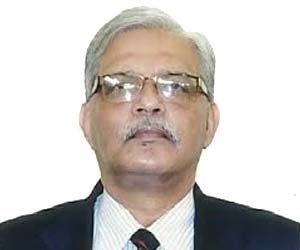

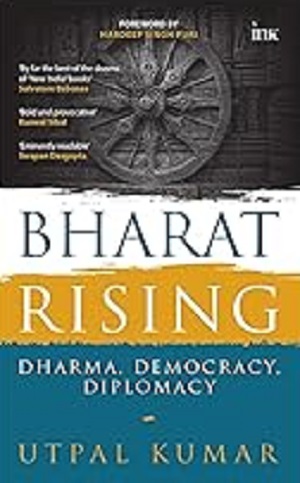
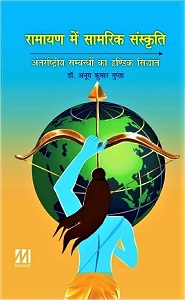
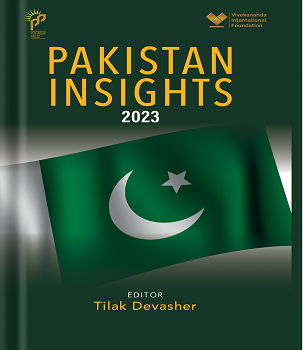
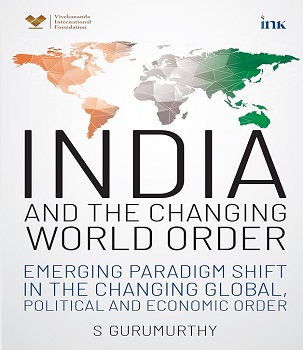
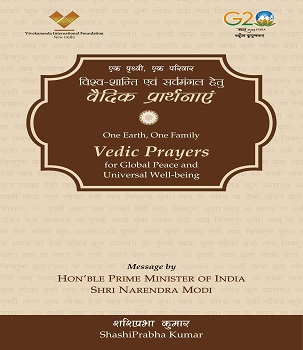
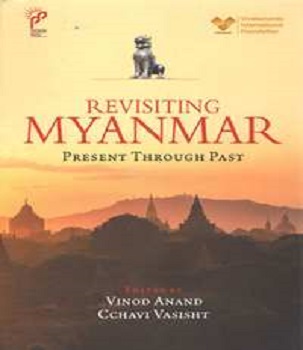
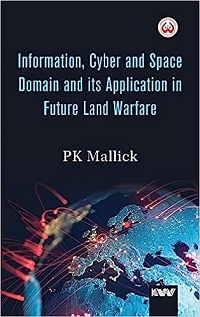
Post new comment